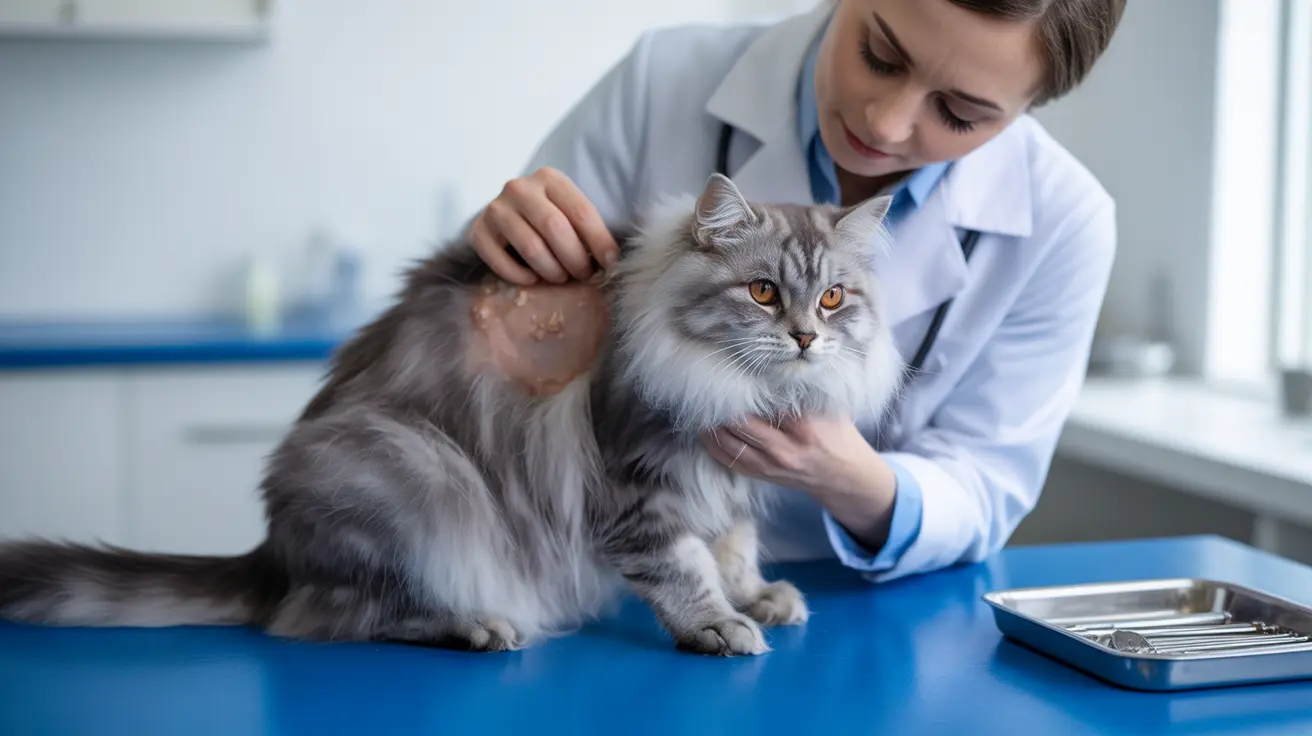Finding crusty scabs on your cat can be concerning for any pet owner. These uncomfortable skin lesions can indicate various underlying health issues, from simple allergies to more serious medical conditions. Understanding the causes and proper treatment approaches is essential for keeping your feline friend healthy and comfortable.
In this comprehensive guide, we'll explore the common causes of crusty scabs on cats, how to identify them, and the most effective treatment options available. We'll also discuss prevention strategies and when it's crucial to seek veterinary care.
Common Causes of Crusty Scabs in Cats
Parasitic Infections
Fleas are the most frequent cause of crusty scabs on cats, particularly through Flea Allergy Dermatitis (FAD). Even a single flea bite can trigger an intense allergic reaction, leading to severe itching and scab formation. Other parasites like mites and lice can also cause similar symptoms.
Allergic Reactions
Beyond flea allergies, cats can develop scabs due to environmental allergens such as pollen, dust mites, or certain foods. These allergies often manifest as small, crusty lesions across the body, accompanied by intense itching and hair loss.
Identifying the Location and Pattern of Scabs
Common Areas
Scabs typically appear in specific patterns depending on their cause:
- Neck and base of tail (usually flea-related)
- Face and ears (often allergic reactions)
- Along the back (can indicate stress-related overgrooming)
- Chin area (possibly feline acne)
Treatment Options for Cat Scabs
Medical Treatments
Professional veterinary treatments may include:
- Prescription antiparasitic medications
- Antihistamines for allergic reactions
- Antibiotics for secondary infections
- Medicated shampoos or topical treatments
Home Care Methods
While veterinary care is essential, some supportive home care measures include:
- Regular flea prevention
- Switching to hypoallergenic products
- Using pet-safe moisturizing treatments
- Maintaining a clean living environment
Prevention Strategies
Preventing scabs involves a multi-faceted approach:
- Regular grooming and skin checks
- Year-round flea prevention
- Reducing environmental stress
- Maintaining a balanced diet
- Regular veterinary check-ups
When to Seek Veterinary Care
Contact your veterinarian if you notice:
- Multiple or spreading scabs
- Signs of infection (redness, swelling, discharge)
- Changes in behavior or appetite
- Excessive scratching or grooming
- Hair loss around scabbed areas
Frequently Asked Questions
What are the most common causes of crusty scabs on cats?
The most common causes include flea allergies, environmental allergies, parasitic infections, stress-related overgrooming, and bacterial or fungal infections. Flea Allergy Dermatitis (FAD) is particularly common.
How can I prevent and treat flea allergies that cause scabs on my cat?
Use year-round flea prevention products, regularly treat your home environment, and consult your veterinarian for appropriate antiallergic medications if needed. Regular grooming and inspection can help catch flea problems early.
What are some home remedies for reducing itchiness and scabbing in cats?
While professional treatment is often necessary, you can help by keeping the affected areas clean, using pet-safe moisturizing products, and maintaining a stress-free environment. Never use human medications without veterinary approval.
How do I know if my cat's scabs are due to stress or allergies?
Stress-related scabs often appear in areas the cat can easily reach while grooming, and you may notice increased grooming behavior. Allergy-related scabs typically appear on the head, neck, and base of tail, often with intense itching.
What are the signs of a secondary infection in cat scabs, and how should I treat them?
Signs of infection include redness, swelling, warmth, pus, or an unpleasant odor around the scabs. These require veterinary attention and typically treatment with antibiotics or antifungal medications.
Remember, while scabs may seem like a minor issue, they can indicate serious underlying health conditions. Always consult with your veterinarian for proper diagnosis and treatment, especially if the condition persists or worsens.






